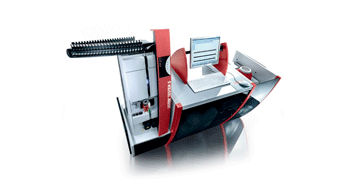
Reading fabric appearance: The yarn tells the story
Testing with USTER® TESTER 5 and USTER® CLASSIMAT 5 shows how a fabric will look and feel. Total customer satisfaction is every spinner´s goal and reputations depend on it. Every critical yarn parameter must to be tested to ensure that the resultant fabric meets expectations, whatever level of the market is being supplied.
Testing with USTER® TESTER 5 and USTER® CLASSIMAT 5 shows how a fabric will look and feel.
Total customer satisfaction is every spinner´s goal and reputations depend on it. Every critical yarn parameter must to be tested to ensure that the resultant fabric meets expectations, whatever level of the market is being supplied. All the evidence confirms it, from the world´s most successful yarn producers, and from detailed practical analysis.
There are two main types of yarn user: those committed to weaving or knitting high-quality fabrics, and those which serve ´commodity´ applications. Both groups have their own specific requirements ´ and it´s essential that spinners understand these needs and how to meet them. What is clear, though, is that yarn testing is fundamental to customer satisfaction, in every case.
Major customers, demanding requirements
The PALLAVAA Group is a successful spinning company in India, specializing in viscose, Micro-modal, modal, polyester, bamboo, Supima and its blends, and pure cotton. Established in 1995, the group has built a market-leading position, today supplying big-name brands. ´We are proud to be a supplier of NEXT, Marks & Spencer, H & M, Victoria´s Secret and others,´says Durai Palanisamy, Executive Director of PALLAVAA Group.
Of course, PALLAVAA is not alone in its desire to work with major retailers. And the group is quick to acknowledge that its ambitions in this direction depend on efficient quality control which meets the requirements of demanding yarn buyers.
In fact, long-standing customer relationships, based on high standards, call for a whole range of yarn quality parameters to be controlled: evenness, imperfections (neps, thin and thick places), hairiness, remaining defects and foreign fibres. Measurements from the USTER® TESTER 5 provide reports and analysis on evenness, imperfections and hairiness, while remaining defects and foreign fibres are covered by the USTER® CLASSIMAT 5. Quality-conscious spinners have trusted in these two instruments for decades for reliable and accurate data. These laboratory testing instruments´ data can tell the yarn quality story ´ and even predict how the final fabric will look.
Every quality parameter matters
It´s also true that some spinners, mainly serving the lower end of the market might believe that evenness (CVm) testing could be sufficient for their needs. But that view is mistaken, says Gabriela Peters, Product Manager for Yarn Testing within Uster Technologies: ´CVm is indeed a relevant yarn quality parameter, but to predict the final fabric of a yarn it is essential to test other parameters too.´
Comprehensive testing at the Uster Technologies laboratory in Switzerland has shown that yarns with comparable CVm values can produce fabrics with obvious differences in appearance. In the tests, Ne24 cotton yarns from 10 different suppliers had insignificant differences in their CVm values, which could lead wrongly to the conclusion that the fabrics would look the same. Further test data from the USTER® TESTER 5 showed results for neps which were close in 8 of the 10 cases, in which the yarns had a nep value below the 25 USTER® STATISTICS Percentile (USPTM). But one of the yarns had a much higher nep value, even exceeding 50 per cent of the USTER® STATISTICS value.
´We know from experience that fabric knitted from yarn with a nep level over 50 per cent will show little pilling on the surface,´says Peters. The yarns were also tested for hairiness ´ and here the test results varied even more widely. Values r




